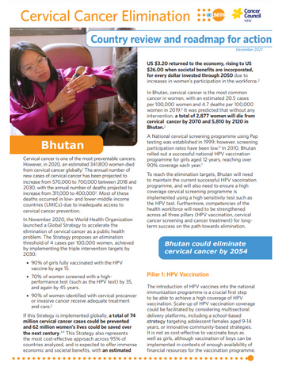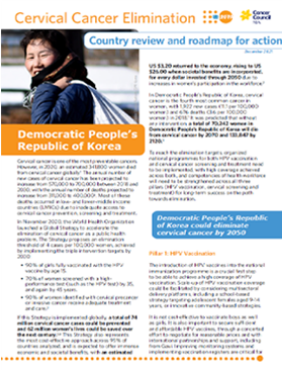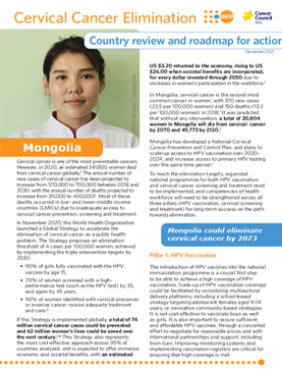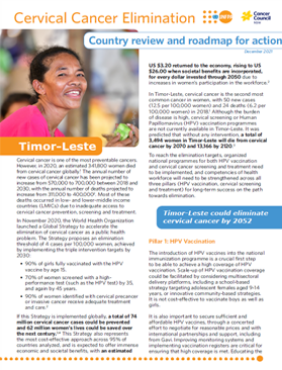Cervical Cancer Elimination in Asia-Pacific: Country Reviews & Roadmaps for Action
Cervical cancer is one of the most preventable cancers.
However, in 2020, an estimated 341,800 women died from cervical cancer globally.
The annual number of new cases of cervical cancer has been projected to increase from 570,000 to 700,000 between 2018 and 2030, with the annual number of deaths projected to increase from 311,000 to 400,0002. Most of these deaths occurred in low- and lower-middle income countries (LMICs) due to inadequate access to cervical cancer prevention, screening and treatment.
In November 2020, the World Health Organization launched a Global Strategy to accelerate the elimination of cervical cancer as a public health problem.
The Strategy proposes an elimination threshold of 4 cases per 100,000 women, achieved by implementing the triple intervention targets by 2030:
- 90% of girls fully vaccinated with the HPV vaccine by age 15.
- 70% of women screened with a highperformance test (such as the HPV test) by 35, and again by 45 years.
- 90% of women identified with cervical precancer or invasive cancer receive adequate treatment and care.
If this Strategy is implemented globally, a total of 74 million cervical cancer cases could be prevented and 62 million women’s lives could be saved over the next century.
The UNFPA Asia-Pacific Regional Office together with the Cancer Council NSW developed a series of briefs on Cervical Cancer Elimination to guide countries within the region.
DOWNLOAD THE BRIEFS (January 2022):
|
|
||||||





















